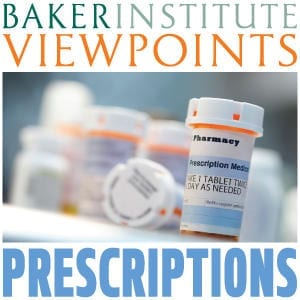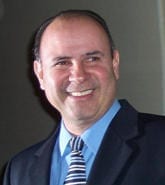 The drugs of choice for an increasing number of Americans are prescription painkillers. Nowhere is the problem more apparent than Houston, where the renowned medical center area has become “a national hotspot for prescription drug abuse,” according to a recent story in the Houston Chronicle. The paper reported in November that a Drug Enforcement Administration operation dubbed “King of the Pill” shut down “pill mills” in raids that were the culmination of an eight-month investigation involving 14 state and local agencies.
The drugs of choice for an increasing number of Americans are prescription painkillers. Nowhere is the problem more apparent than Houston, where the renowned medical center area has become “a national hotspot for prescription drug abuse,” according to a recent story in the Houston Chronicle. The paper reported in November that a Drug Enforcement Administration operation dubbed “King of the Pill” shut down “pill mills” in raids that were the culmination of an eight-month investigation involving 14 state and local agencies.
As policymakers grapple with how to address this growing problem — including a quiet reassessment of U.S. policies that focus on keeping illegal drugs out of the country — drug policy experts at the Baker Institute ask: What does rising prescription drug abuse mean for the “war on drugs”? Nonresident drug policy fellow Gary Hale, former chief of intelligence in the Houston Field Division of the Drug Enforcement Administration, leads off this three-day installment of Baker Institute Viewpoints by laying out the scope of the problem.
Prescription drug abuse is the nation’s fastest-growing drug problem. Some studies suggest that it has reached epidemic proportions, with prescription drugs being the second-most abused category of drugs after marijuana. Some people experiment with prescription drugs because they think they will help them have more fun, lose weight, fit in, or study better. The National Survey on Drug Use and Health shows that in 2009, nearly one-third of teens using drugs for the first time chose to experiment with a prescription drug. The same study shows that more than 70 percent of people who abused prescription pain relievers got them from family members or acquaintances, while approximately 5 percent got them from a street dealer or via the Internet. There is also a misguided belief that “medications” are safer than illegal drugs because they are prescribed by a medical doctor. Doctors are reportedly prescribing more drugs for more health problems than in the past, and Internet pharmacies often provide prescription drugs without any form of verification.
The 2011 Prescription Drug Abuse Prevention Plan prepared by the Obama administration as part of its National Drug Control Strategy includes several initiatives to reduce prescription drug abuse.When it comes to the abuse of pharmaceuticals, the drug war begins in the home. The biggest challenge to stop drug abuse is to educate parents, children, teenagers and patients about the dangers of abusing prescription drugs. The Drug Enforcement Administration (DEA) is responsible for the regulation and monitoring of doctors, pharmacies and manufacturers of prescription drugs and encourages the states to develop prescription drug monitoring programs to detect the incidence of “doctor shopping” and diversion.
In 2010, the DEA joined with state and local law enforcement agencies and state governments, as well as public health and community organizations, to establish the first drug disposal or National Prescription Drug Take-Back Day. On that day, Americans across the nation are encouraged to anonymously return unused, unwanted and expired prescription medications at several participating locations in their communities.
Through its pill-return initiative, the DEA and its partners are attempting to not only promote awareness of this growing epidemic among Americans, but also to educate the public on how to properly dispense their unused medications. On Sept. 29, 2012, the public turned in 244 tons of unused or expired medications at various locations throughout the country. Between 2010 and 2012, the DEA has conducted five drug take-back programs and reported that more than two million pounds of prescription medications were removed from circulation.
The federal government is also encouraging state legislatures to provide law enforcement agencies with more tools to eliminate improper prescribing practices and to stop pill mills or illegal pharmacy diversion of medications. Prescription drug abuse is often seen as “white-collar” crime because it is perpetrated by pain clinics, clinic owners, physicians, physician’s assistants and nurse practitioners, as well as pharmacists, and there are no foreign “drug kingpins” to target or blame.
Pill mills, or illegal prescription and sales rackets, as well as illegal pain clinics are a significant problem throughout the nation. In 2008, Houston law enforcement agencies estimated that there were several dozens of illegal pain clinics operating in the area, as well as a number of independent pharmacies and physicians that conspired to service the otherwise illegal pain clinics.
The proliferation of illegal pain clinics was born of the same greed for money that is symptomatic of illegal drug traffickers, whether they are in Colombia, Thailand or Texas. The methods by which law enforcement agencies investigate errant doctors or other medical professionals are not much different from targeting foreign drug cartels. Intelligence is collected through undercover infiltration, the use of informants, and other techniques until enough evidence is collected so that search and or arrest warrants can shut these illegal operations down.
The only problem is that these investigations are most often regulatory, and not criminal, in nature. That is to say, most of the targets of these crimes often get away with fines and the loss of their licenses. In a few cases, especially where the diversion of these pharmaceuticals can be tied to the death of an abuser, these “white-collar” criminals face jail sentences.
Law enforcement agency efforts to reduce and eliminate the illegal sale and abuse of prescription drugs are a shadowy facet of the national “drug war” effort, and represent a slice of criminality that is often unseen and, unfortunately, not given the serious attention that it is due.
This post was written in memory of Carol Kay Settle, a 37-year Houston-born Texan who passed away in San Antonio on Oct. 28, 2012. Her unfortunate death was a result of prescription drug abuse.
 Gary J. Hale is the nonresident fellow in drug policy at the Baker Institute. From 2000 to 2010, he was chief of intelligence in the Houston Field Division of the Drug Enforcement Administration. From 1990 to 1997, Hale had various assignments in Washington, D.C., including serving as chief of the Heroin Investigations Support Unit, chief of the Dangerous Drugs Intelligence Unit and liaison to the National Security Agency. During this period, he also served a tour of duty at the U.S. Embassy in Bogotá, Colombia. From 1997 to 1998, Hale was assigned as the DEA intelligence chief at the U.S. Embassy in Mexico City.
Gary J. Hale is the nonresident fellow in drug policy at the Baker Institute. From 2000 to 2010, he was chief of intelligence in the Houston Field Division of the Drug Enforcement Administration. From 1990 to 1997, Hale had various assignments in Washington, D.C., including serving as chief of the Heroin Investigations Support Unit, chief of the Dangerous Drugs Intelligence Unit and liaison to the National Security Agency. During this period, he also served a tour of duty at the U.S. Embassy in Bogotá, Colombia. From 1997 to 1998, Hale was assigned as the DEA intelligence chief at the U.S. Embassy in Mexico City.